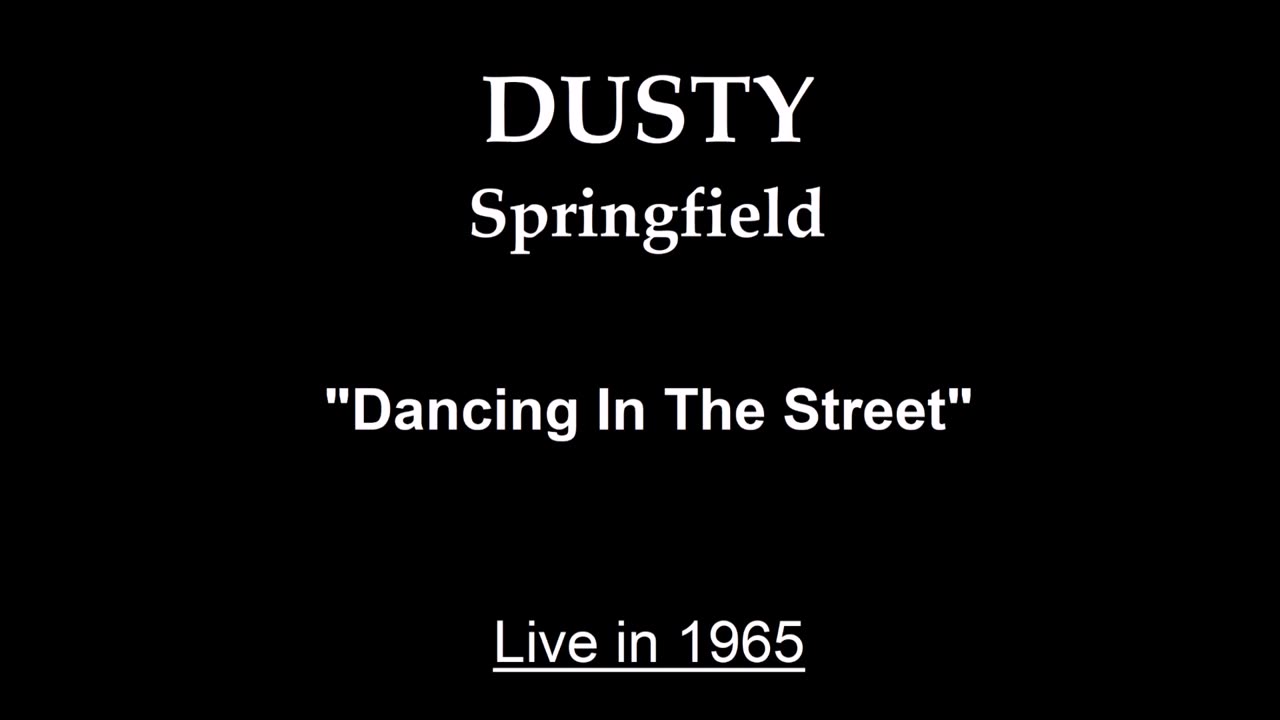Premium Only Content

Dusty Springfield - Dancing in the Street (Live in 1965)
Dusty Springfield - Dancing in the Street (Live in 1965)
Mary Isobel Catherine Bernadette O'Brien (16 April 1939 – 2 March 1999), better known by her stage name Dusty Springfield, was an English singer. With her distinctive mezzo-soprano sound, she was a popular singer of beautiful blue-eyed soul, pop and dramatic ballads, with French chanson, country, and also jazz in her repertoire. During her 1960s peak, she ranked among the most successful British female performers on both sides of the Atlantic. Her image – marked by a peroxide blonde bouffant/beehive hairstyle, heavy makeup (thick black eyeliner and eye shadow) and evening gowns, as well as stylised, gestural performances – made her an icon of the Swinging Sixties.
Born in West Hampstead in London into a family that enjoyed music, Springfield learned to sing at home. In 1958, she joined her first professional group, The Lana Sisters. Two years later, with her brother Tom Springfield and Tim Feild, Springfield formed the folk-pop vocal trio The Springfields. Two of their five 1961–63 Top 40 UK hits – "Island of Dreams" and "Say I Won't Be There" – reached no. 5 in the charts, both in the spring of 1963. In 1962 they also hit big in the United States with their cover of "Silver Threads and Golden Needles".
Dusty Springfield's solo career began in late 1963 with the upbeat pop record "I Only Want to Be with You" — a UK no. 4 hit, and the first of her six transatlantic Top 40 hits in the 1960s, along with "Stay Awhile" (1964), "All I See Is You" (1966), "I'll Try Anything" (1967) and the two releases now considered her signature songs: "You Don't Have to Say You Love Me" (1966 UK no. 1/US no. 4) and "Son of a Preacher Man" (1968/69 UK no. 9/US no. 10). The latter features on the 1968 pop and soul album Dusty in Memphis, one of Springfield's defining works. In March 2020, the US Library of Congress added it to the National Recording Registry, which preserves audio recordings considered to be "culturally, historically or aesthetically significant".
-
 LIVE
LIVE
Vigilant News Network
15 hours agoUK Government BUSTED in Secret Plot to Extract Your Data | Media Blackout
1,759 watching -
 1:03:32
1:03:32
Winston Marshall
3 days ago"War On Children!" The DEMISE Of The West Starts With Schools - Katharine Birbalsingh
119K67 -
 48:02
48:02
Survive History
17 hours ago $8.11 earnedCould You Survive as a Sharpshooter in the Napoleonic Wars?
68.7K3 -
 12:03
12:03
Space Ice
18 hours agoSteven Seagal's China Salesman - Mike Tyson Knocks Him Out - Worst Movie Ever
50.8K19 -
 11:37
11:37
Degenerate Jay
18 hours ago $17.84 earnedJames Bond Needs Quality Over Quantity From Amazon
110K10 -
 15:23
15:23
Misha Petrov
18 hours agoTrad Wives & Girl Bosses Go to WAR!
81.7K51 -
 2:03:11
2:03:11
TheDozenPodcast
16 hours agoFootball villain fighting the state: Joey Barton
62.8K1 -
 13:18:50
13:18:50
Scottish Viking Gaming
19 hours ago💚Rumble :|: Sunday Funday :|: Smash the Blerps and Vape the Terpes
98.9K8 -
 1:45:00
1:45:00
RG_GerkClan
21 hours ago🔴LIVE Sunday Special - It's Time for World Domination - Civilization VII - Gerk Clan
90.6K28 -
 LIVE
LIVE
Major League Fishing
4 days agoLIVE Tackle Warehouse Invitationals, Stop 1, Day 3
98 watching